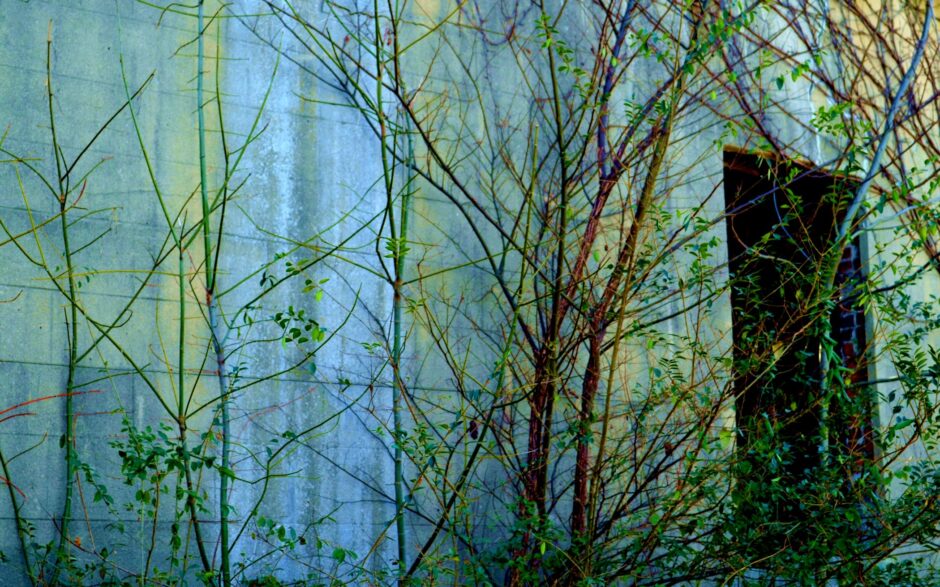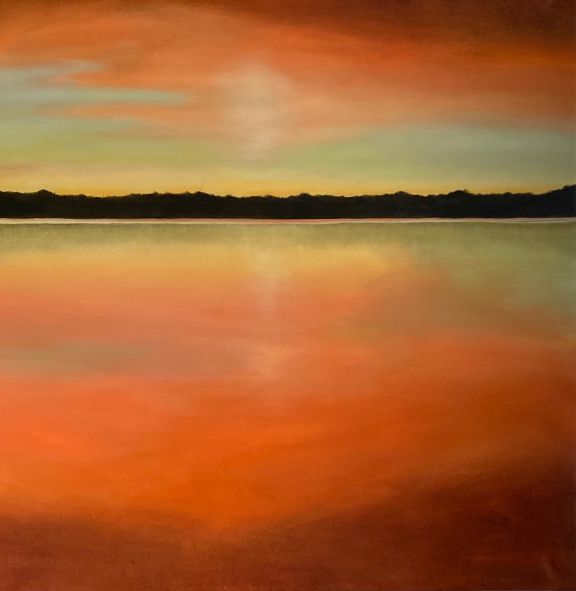So He Built a Wall
by Deborah Fagan Carpenter

We all know the story of the first Thanksgiving at Plymouth. After enduring a harsh year, the settlers prepared a dinner to celebrate their survival, and Native Americans nearby were included. In subsequent years, however, cordiality between the colonists and their red skinned fellow men went south—or west, as it were. Because of white man’s diseases, against which they had no immunity, war, and a greedy thirst for land by the immigrants, the Native Americans were eventually all but eradicated.
Not the least of the atrocities perpetrated by the white man was the eviction of all tribes east of the Mississippi River, as a result of Andrew Jackson’s appalling Indian Removal Act. In 1838 and 1839, all tribes east of the Mississippi were forcibly marched to “reservations” in what was then the Oklahoma Territory, and so many deaths occurred on the brutal journey, that it became known as The Trail of Tears.
In the course of that inexcusable expulsion, two young Yuchi girls living near the Tennessee River in northwest Alabama managed to stay hidden for an unknown period. Not surprisingly, Te-lah-nay and her sister, Whana-le were eventually discovered and were herded into a stockade where metal tags bearing a number on one side, and the US Army emblem on the other were hung around their necks. Ultimately, they too were forced to a reservation in Muskogee, Oklahoma, with Te-lah-nay wearing government ID tag number 59 and Whana-le number 60. Out of 55,000 Native Americans who were removed from that part of the country, Te-lah-nay would be the only one who could prove her return.

Family legend held that after Te-lah-nay’s birth, her grandmother placed her umbilical cord in the Tennessee River, giving her spiritual connection to the flowing water for life. The Yuchi called the river “Nunnuhsae,” meaning “the singing river,” because sounds they heard emanating from it made them believe a woman lived in the water, guiding them with her music. But the rivers in Oklahoma were silent. Te-la-nay longed for the river and the place of her birth, and after one winter in Oklahoma, she made the radical decision to return. “My sister is like a wildflower,” she said. “She can grow anywhere. I cannot. If I stay in this dark place, I will die.”
In an astonishing act of bravery and determination, Te-lah-nay walked 860 grueling miles on a four to five-year journey back home, guided only by the connection to the river and her grandmother’s spirit. Once there, she was of course forced to remain hidden, but she eventually married a white man and had several children. Because she died at an early age, her grandmother said she had walked herself to death. It is said that the remarkable woman had eyes that were indescribable and that her name meant “Woman with the dancing eyes.”

Tom Hendrix, who lives nine miles east of the Tennessee River, just off of the Natchez Trace Parkway, is Te-lah-nay’s great-great-grandson. Tom spent over a quarter of a century building a wall to honor her memory and her unbelievable accomplishment, after meeting a Yuchi woman who said to him, “We shall all pass through this earth, and only stones will remain. We honor our ancestors with stones.”
And honor her he did. For over thirty-five years, Tom Hendrix lovingly placed eight and a half million pounds of sandstone, limestone, and fieldstone one stone at a time, to form the longest un-mortared wall in the country, each stone representing a step Te-lah-nay took on her journey home. The entirety of the wall is a mile and a quarter long, it is the largest memorial to a Native American woman, it is classified as one of the Top 10 Environmental Arts in the United States, is cataloged in the Library of Congress, and is the only non-church structure listed among Alabama’s Top Spiritual Places. Tom also proudly points out that Rosanne Cash won a Grammy for her song, “A Feather is Not a Bird,” which references the wall.

The limestone and sandstone were found along the banks of the Tennessee River, and the fieldstone was left behind after farmers had cleared their land. To arrive at the exact weight of the wall, Tom would stop at a cotton gin on his way to collect the stones, first weighing the truck empty, and after filling the bed with one layer of stones, he’d stop on the return trip to weigh it again. He laughingly says, “I wore out three trucks, 22 wheelbarrows, 2,700 pairs of gloves, three dogs, and one old man.”
The astounding wall flanks both sides of the entrance to Tom’s property. One side follows a somewhat straight path, representing Te-lah-nay’s walk to Oklahoma and the other side twists and bends, representing her trip back home.

Today, Tom stands or sits in a lawn chair and greets each visitor with “Aglaysaha—it’s a good day.” He is willing to share as much of his great-great-grandmother’s story and as much about his monument to her as one wants to hear, and then he will invite visitors to walk through the paths, offering only this. “I have one request: look with your third eye,” he says, as he touches his heart. “This is a special place. It’s a holy place.”

Stones that look like faces comprise one section of the wall at the entrance of the area that represents Te-leh-nay’s journey home. The faces are natural holes worn in soft limestone from centuries of bumping along at the edge of the Tennessee River. They seem to say to visitors that spirits are ever present among the rocks and that this place should be treated with respect.

Surrounded by white and red oak, sweet gum and beech trees, the wall is often built around them, showing deference. Secluded alcoves are found all along the path, offering many opportunities for quiet reflection, and one of those suggests an auditorium, providing many places to sit. Red prayer ribbons are seen hanging in many of the trees, and often visitors will leave gifts of shells or feathers lying on one of the benches. Sadly, some guests also leave their trash.

The shape, height, and width of the wall changes to reflect the obstacles Te-leh-nay encountered. The height varies from four feet to six and a half or seven feet in some places.
A circular wall—a prayer circle—is built at the entrance to the other side. It is called Ishatae…a quiet place. Indicating the circle of life, it is made up of four levels of stone—expressing birth, life, death, and rebirth. Tom’s only restriction for the circle is that nothing is allowed in it but prayer.

I noticed a distinct circulation of cold air in several places as I walked through the side of the wall which represents the walk to Oklahoma. Because Tom was with several people as I exited, however, I didn’t ask him about it. But I read somewhere after my visit that another woman had experienced the same sensation, and when she inquired as to its source, Tom replied, “If all great mysteries were solved, how boring life would be.”
There is no advertisement for the Wichahpi Commemorative Stone Wall. Tom says that “if people find it, they were meant to come.”
After walking the length of the wall, Charlie Two Moons, a spiritual person, said: “The wall does not belong to you, Brother Tom. It belongs to all people. You are just the keeper. I will tell you that it is Wichahpi, which means ‘like the stars.’ When they come, some will ask, ‘Why does it bend, and why is it higher and wider in some places than in others?’ Tell them it is like your great-great-grandmother’s journey, and their journey through life–it is never straight.”

All photos by Deborah Carpenter



Thanks Deborah! You continue to discover and share important stories for all of us. I believe the near genocide of Native American people is our nation’s original sin, quickly followed by our second national sin of slavery. Only after we own and reconcile these wrongdoings as a nation will we be able to build the beloved community which we are seeking. Thanks again for helping move us closer to the goal. Lots of love! – Bill
Thank you, Bill. I totally agree with you.
Thank you Deborah. What a beautiful story of a very sad time in our Country’s history. What a wonderful place to reflect on the circle of life.
Thank you, Maggie. It did me good to go over there during this distressing time. It helped to put things into perspective.
Thank you, Deborah.
Especially in light of the past two years of brutal politics, demeaning verbal assaults, quasi-sadistic threats, and disillusioning expose’s this story is a gift, a warm, deep, soul massage.
These are my people. Thank you for introducing them to me., Deborah.
Love heals.
Thank you, Randall. It was a gift to me as well, at a time that I too needed it. I actually didn’t realize until the next day how much it had impacted me. It’s a magical place and he is a wonderful person.
A great story about a monumental tribute to an ancestor. We also have one in our family: 3 rocks where 3 great grandfather’s still used to be.
Not really.
Hahahaha! Thank you, Rachel!
What a wonderful, inspiring story. I enjoyed it a lot. Too bad we have such terrible history but so wonderful that it inspires many of us to do something about it.
Thank you, Gary, and thank you for all the pieces you’ve done on this awful chapter in our history. (that we keep on living) I’ve felt such anger about it in the past, but this is certainly the closest I’ve ever been to it.
Deborah, you continue to amaze me. Your many talents are appreciated by so many. Who knew you would be doing all this.
Awwh, Tommye Lou, thank you so much, and thank you for continuing to read Porchscene!
GREAT ARTICLE ! I am adding this monument to my bucket list. Well done, thanks.
Thanks, Gene! You’ll need to live a long time to get all of your list done!!
Great story of commitment and heritage. Shame the wall is still not an official stop along the 444-mile Natchez Trace Parkway!!! As a one/eighth (1/8) Cherokee (Living 3 miles from the parkway) Norma and I are now planning a trip to Florence, Al. Thanks for the “PORCHSCENE”.
If it were actually on the official stop list, I’m not sure he could handle all of the people. The reason he finally called the wall “finished” was because so many people were coming and he wanted to be able to visit with them all. He’s a special person.
Thank you for the story of this very special wall.
Thank YOU for reading it!
This is truly a spiritual place. Well told, Deborah, well told
Thank you, Tom. Glad you liked it!